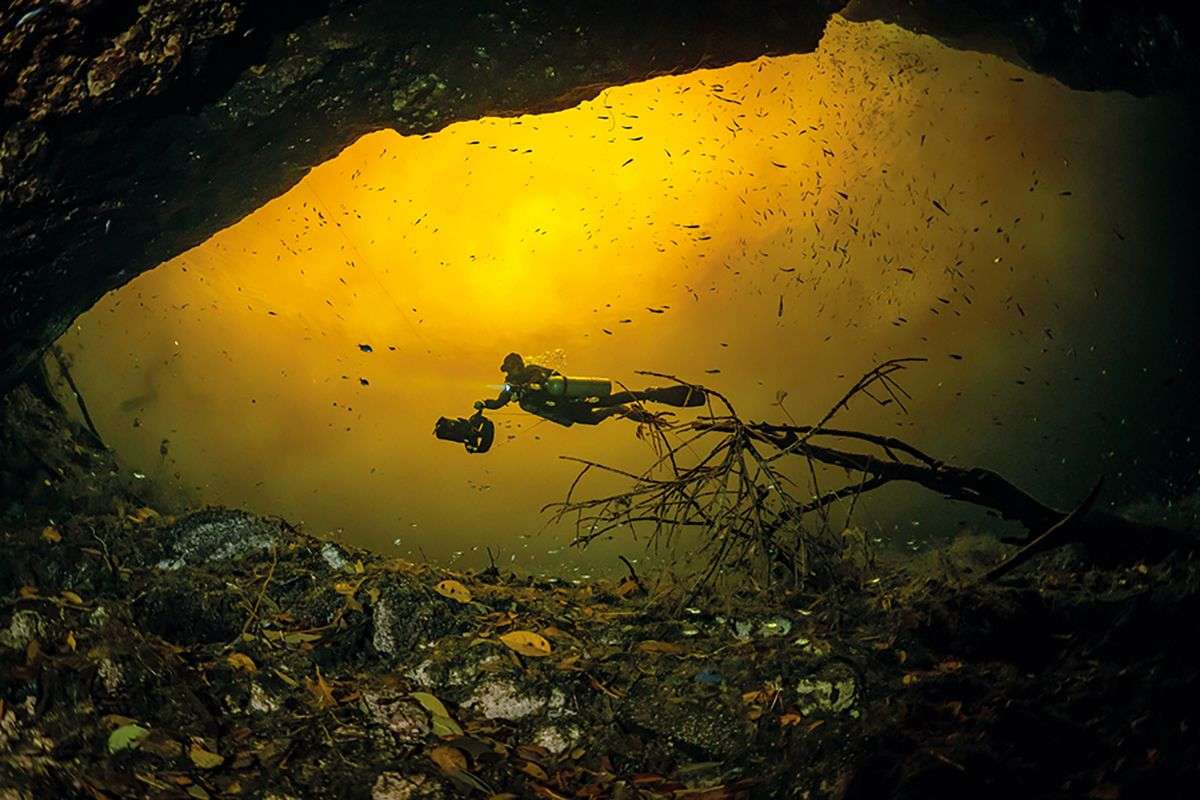
Diver, teacher, cave explorer, filmmaker, underwater photographer, conservationist, campaigner. Valentina Cucchiara is all of these and more. She talks to Mark ‘Crowley’ Russell about her extraordinary career
Valentina Cucchiara is passionate about the ocean. Passionate about its conservation, passionate about spending time below its surface and passionate about capturing its majesty through photography and videography – and that passion burns as brightly today as it did 26 years ago, when she first started diving.
A native of Rome, Italy, Valentina was studying biology and intent on becoming a vet when, shortly before graduating, she received an invitation to go scuba diving in the Red Sea. Wanting to spend as much time as possible underwater while she was there, she took her Open Water course at home in Italy before heading out to Hurghada – where everything changed.
‘I went diving and it blew my mind,’ Valentina said when we spoke. ‘I realised later on, when I became an instructor, from the moment I went underwater, it was like home. All this stuff that you figure out, such as buoyancy issues and the like, I didn’t have any of that. I just fell in the water and was like, oh, this is great! I just couldn’t think of anything else but diving, diving, diving.’
Returning to Italy to complete her thesis on the ecology of amphibians and reptiles, Valentina spent the next year taking every opportunity she could to go diving, before heading out to the Red Sea once more, this time to Sharm El Sheikh, where she enrolled on a divemaster course with Camel Dive Club. Within a month, she was back in Sharm to stay.
‘I never chose to become a professional full-time diver,’ she said. ‘But I knew that I needed a break from the academics and to figure out what I wanted to do when I grew up. My professor told me, “I can’t guarantee you’re going to have the same position when you get back”, but after my divemaster course I started to get work. I started to get paid to be underwater. I couldn’t believe my luck, and I ended up staying a year without even thinking about it.’
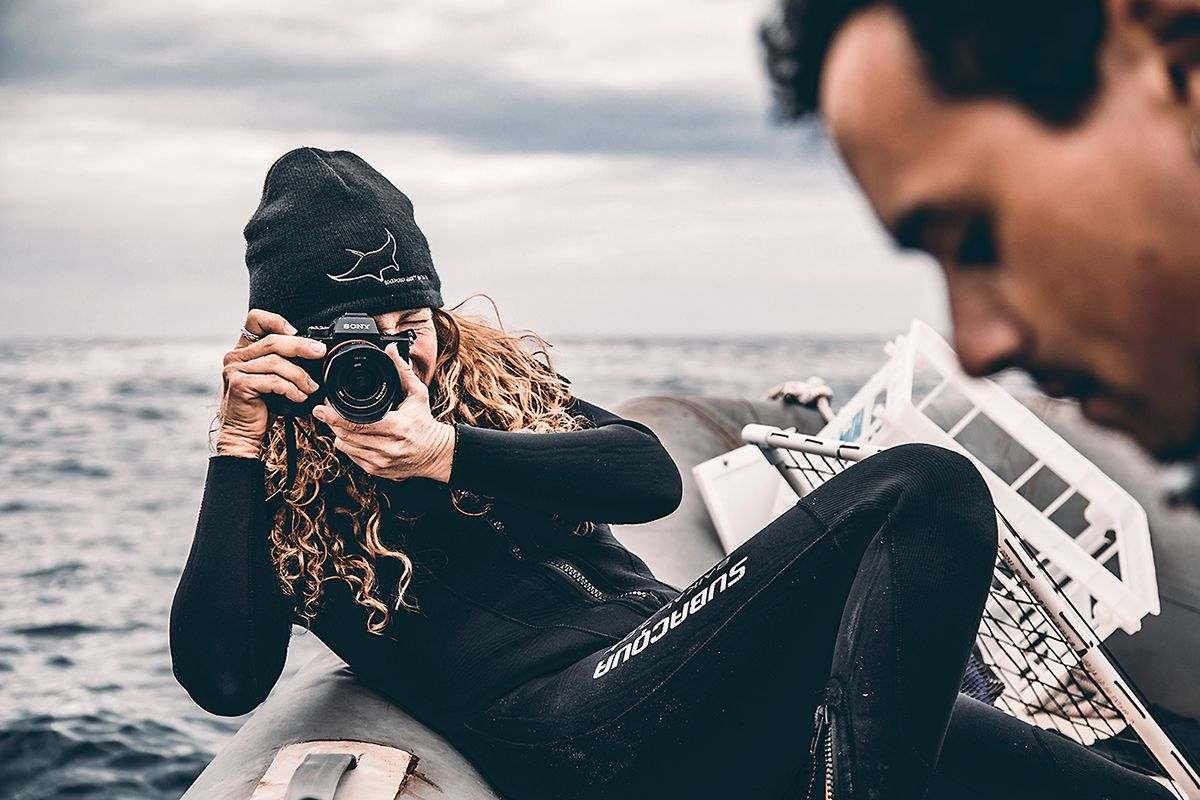
With instructors in much greater demand than divemasters, it wasn’t long before Valentina qualified to teach scuba diving to others. She quickly got a job with Sinai Divers in Na’ama Bay, owned by Red Sea diving pioneers Rolf Schmidt and Petra Röglin. During 1997, her father made the inevitable parental visit to check on his daughter’s wellbeing, so Valentina taught him to dive and made him ‘an ally’ of her chosen path. In November of that year, however, life in Egypt – especially for those in the tourism industry – was thrown into turmoil by the massacre of 62 people, mostly tourists, at the Temple of Hatshepsut in Luxor.
‘Suddenly all the tourists were gone,’ remembered Valentina. ‘The planes were coming empty, getting people, and taking them all out. But I stayed on, and that’s when I started photography. There was a guy called Igor at Sinai Divers. He gave me a course and he let me use his camera. So I spent another month in Sharm, just learning a bit of photography.’
With tourism at a standstill, Valentina was invited by Rolf and Petra to Germany’s Düsseldorf International Boat Show (aka Boot) in early 1998. There, she signed up with Raleigh International for a volunteer coral conservation job in Belize. She was deployed to the deserted island of Coco Plum – now an exclusive private island resort – to monitor how runoff from agricultural practices was affecting the coral of the surrounding reef.
At Boot she also saw a short film about the cenotes of Mexico, which made a lasting impression.
‘They were showing awesome images of underwater caves which I didn’t even know existed at the time,’ she said. ‘I was really in love with the images, so after Belize I went travelling for a bit and I ended up going through Mexico and I went to dive the cenotes – and that was it. Mind blown again!’
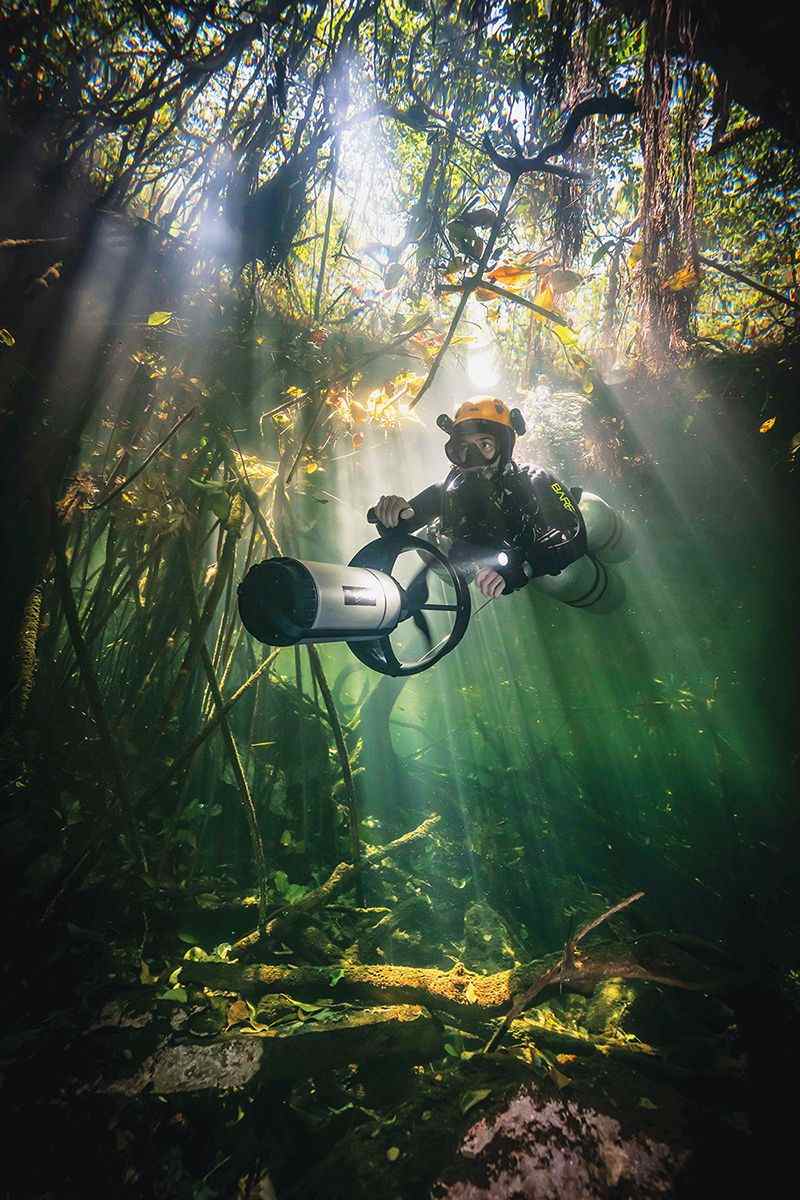
Valentina found work as an instructor in Mexico and was introduced to Jerónimo Avilés Olguín, a cave-diving explorer and videographer with whom she took her first course in underwater videography; now a friend and mentor she still works with, two decades later.
In the cenotes diving hub of Tulum in 1998, underwater videography was limited to a handful of staff at a small number of dive centres. With the guidance of Avilés, Valentina stopped working as a dive instructor and began her career as a videographer.
‘For me, diving has always been a series of challenges,’ she said. ‘I had to challenge myself diving in a new environment, with new equipment, new rules. Then I was filming in the caverns, which was a different challenge. I had to use lights and I had to learn how to portray this beautiful environment, which is not so simple.’
Many of the cenotes were virtually untouched at this time, and only a handful of the important archaeological finds that would be uncovered over the next 20 years had been made. During Valentina’s own cave course, Avilés spotted a human skull which, upon investigation, led to the discovery of ten ice-age skeletons, the first human remains to be recovered from an era when the cenotes were above the waterline.
Even just getting to cenotes in the first place could be something of an adventure, back in 1998.
‘I remember visiting Nohoch, which is now famous, and it’s got beautiful entry and exit platforms and paths, and you can get there with a car,’ said Valentina. ‘We had donkeys carrying our tanks and our equipment, and we walked an hour and a half into the jungle to get to the water. The whole thing was exciting. It was adventurous; it was challenging, but it was fun. A lot of fun.’

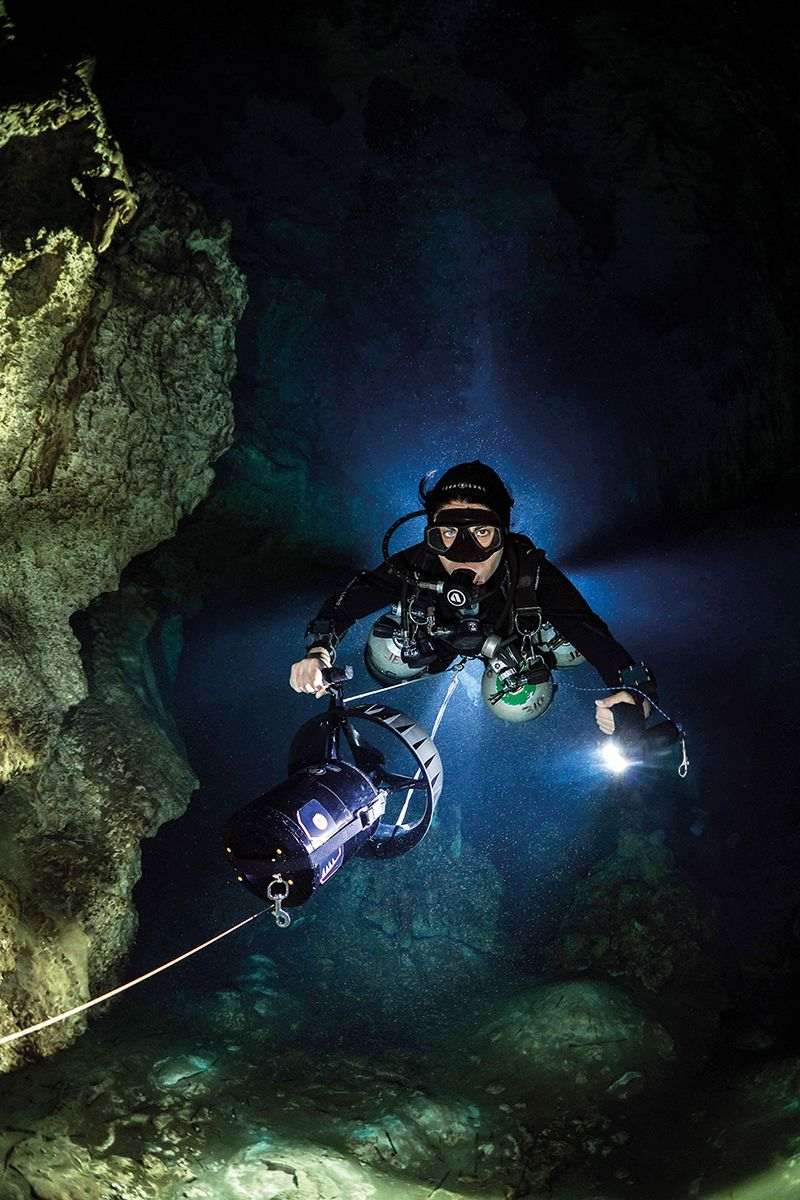
Valentina returned to Sharm in April 2000 for what was supposed to be a short break before taking on a position with a conservation organisation. But the job fell through and she stayed in Egypt, initially working with the video company at Sinai Divers, before starting her own concession as in-house videographer for Oonas Divers, where she remained until 2005.
Forever looking for new challenges, Valentina took TDI and GUE technical diving courses during this time. She also volunteered to film exploratory dives around the previously undocumented deeper reefs of Sharm, including the search for the wreck of the Jolanda, the ship that shed its famous porcelain cargo over Shark Reef in Ras Mohammed. She also began to receive commissions for TV productions, filming Nuno Gomes’ world-record breaking deep dive in Dahab in 2005.
In 2006, Valentina and her now partner, Nick Poole – whom she had hired to work at Oonas while she was away filming – took jobs on board the MV Tala, a GUE-dedicated technical diving Red Sea liveaboard, splitting her time between shooting videos of dive tourists and exploratory research expeditions. She took on work for underwater scooter manufacturer DiveXtras, who went on to sponsor her and for whom she is now a brand dealer in Mexico.
At the same time, in between her professional commitments, Valentina was also volunteering for conservation projects in the Red Sea, including working with the late, pioneering HEPCA director Amr Ali to start a turtle project, and working with an Italian organisation to protect the spinner dolphins of Marsa Alam. It was during this time that she worked on Carl Safina’s Saving The Ocean documentary series for PBS.
Volunteer conservation work has been a constant theme of Valentina’s career – willingly dedicating her free time to her original love of biology, a subject she is clearly still very passionate about.
‘I do a lot of voluntary work and I’ve been doing it ever since I started,’ she said. ‘My love for biology always stayed. It’s really difficult to work in biology projects, because there are no funds, so I always end up volunteering, wherever I’ve been.’

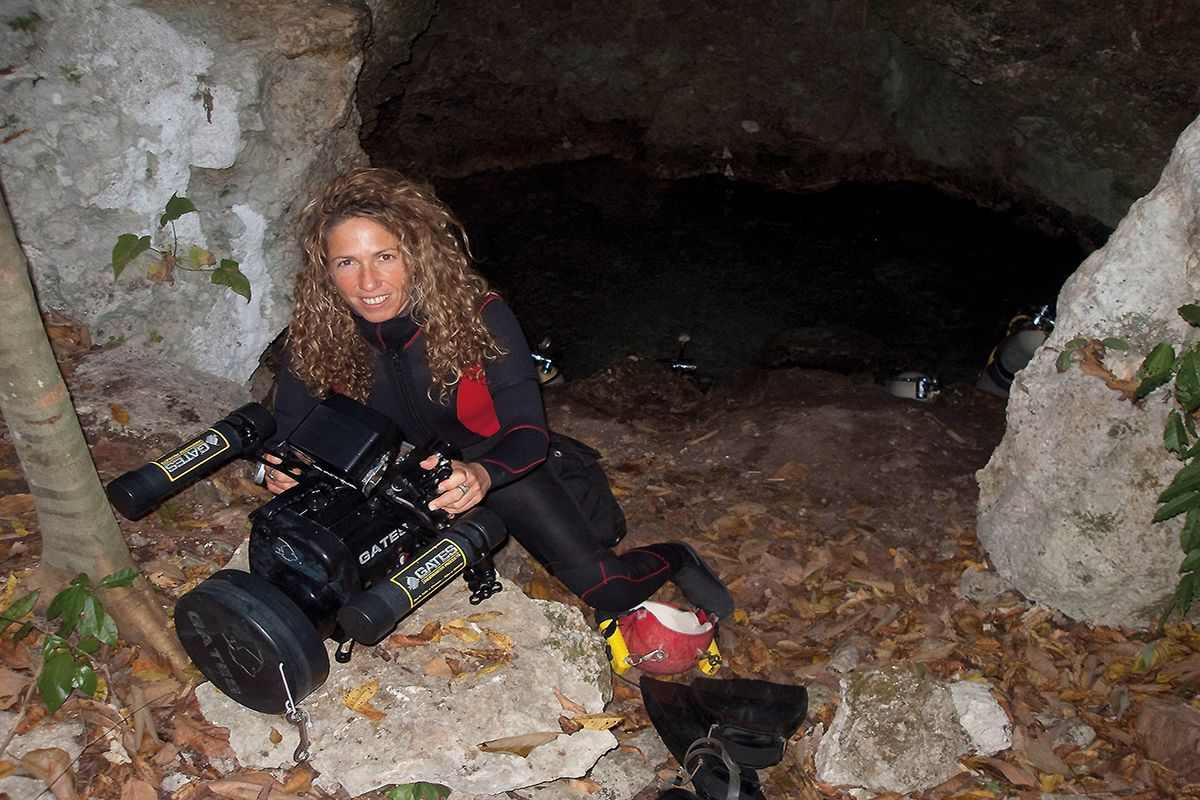
Following the Arab Spring of 2011, with Egyptian tourism again in the doldrums, Valentina and Nick returned to Mexico, where she turned her attention once more to underwater photography. Looking at some of her incredible work with a still camera, it’s difficult to imagine that she only bought her first DSLR just over ten years ago – but, as always, it is the challenge of learning new things that is the driving force behind her expertise.
‘I got my first Canon, the 5D Mark II, when I was working on the Tala [in 2009], so that’s when I really started with photography,’ she said. ‘In the past maybe five years, my passion has been photography. It’s my new challenge; it’s where I’m still learning. There’s always a lot to learn in diving, and that’s something that I like. My divemaster instructor told me from the start, he said, “The most important lesson about this course is that you will never know enough. The moment you think that you know everything about diving, is the moment you stop learning.” I still cherish the fact that that’s what keeps me in this world, because every dive is a different challenge.’
The move back to Mexico brought her into contact with one of the organisations most close to her heart, Manta México Caribe, a non-profit conservation group founded in 2013 by Karen Fuentes, which has been affiliated with the Manta Trust since 2015 and is dedicated to the protection of mantas and mobulas in the Mexican Caribbean. Once again, Valentina volunteered her services for free to become the organisation’s official ‘documentarist’.
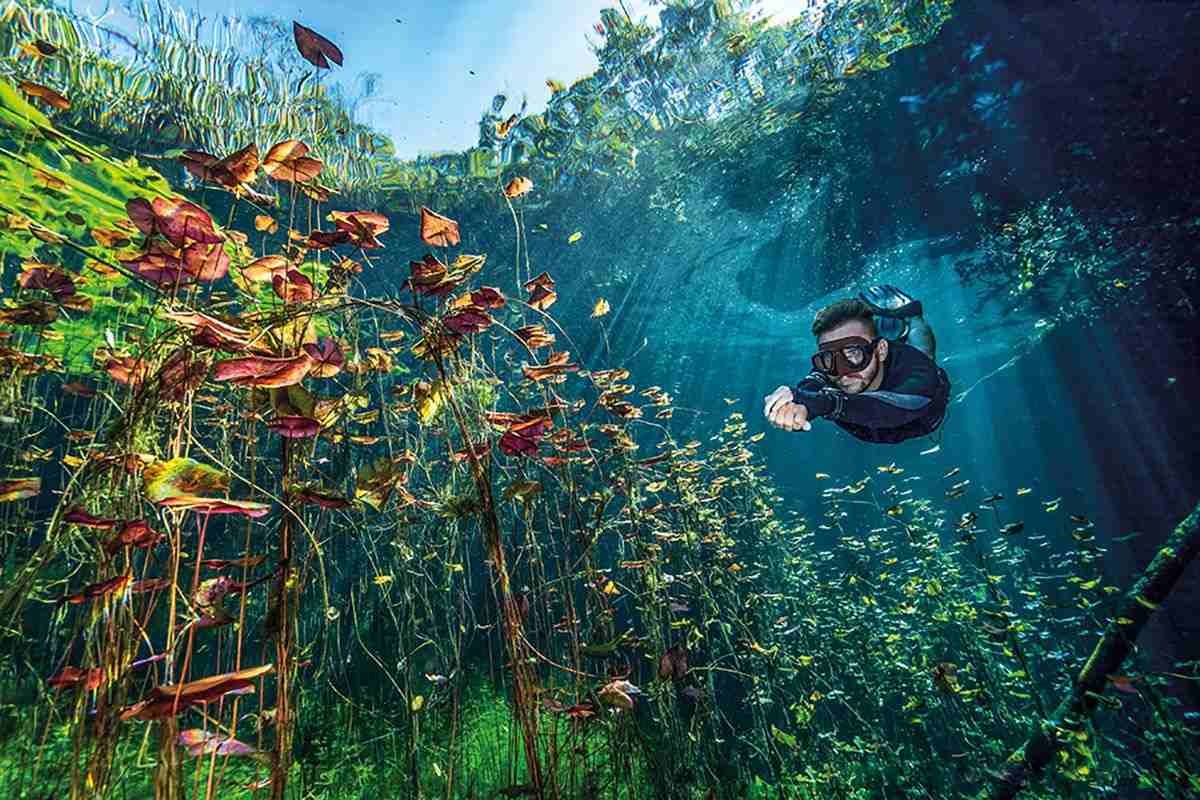
The association with Manta México Caribe brought her onto the team behind a documentary produced by Sylvia Johnson entitled Mermaids Against Plastic, a National Geographic Explorer project for which Valentina was the underwater cinematographer and which won in its category at the 2020 Jackson Hole Wildlife Film Festival. This in turn led to Valentina being able to fulfil a childhood dream and join the Sea Shepherd Conservation Society for a scientific expedition to the Revillagigedo archipelago in early 2021.
Rather than the chasing of illegal fishing vessels across the high seas, with which Sea Shepherd is often associated, the expedition to Socorro Island was a three-month research collaboration with humpback whale researchers and members of the Comisión Nacional de Áreas Naturales Protegidas (CONANP) to monitor populations of pelagic species, coral reefs, fish, invertebrates, plankton and albatross. In a region that has only been a national park since 2017, where funding has been cut to leave just seven park rangers for the whole state of Baja California, Sea Shepherd’s presence was invaluable, and exactly where Valentina wanted to be.
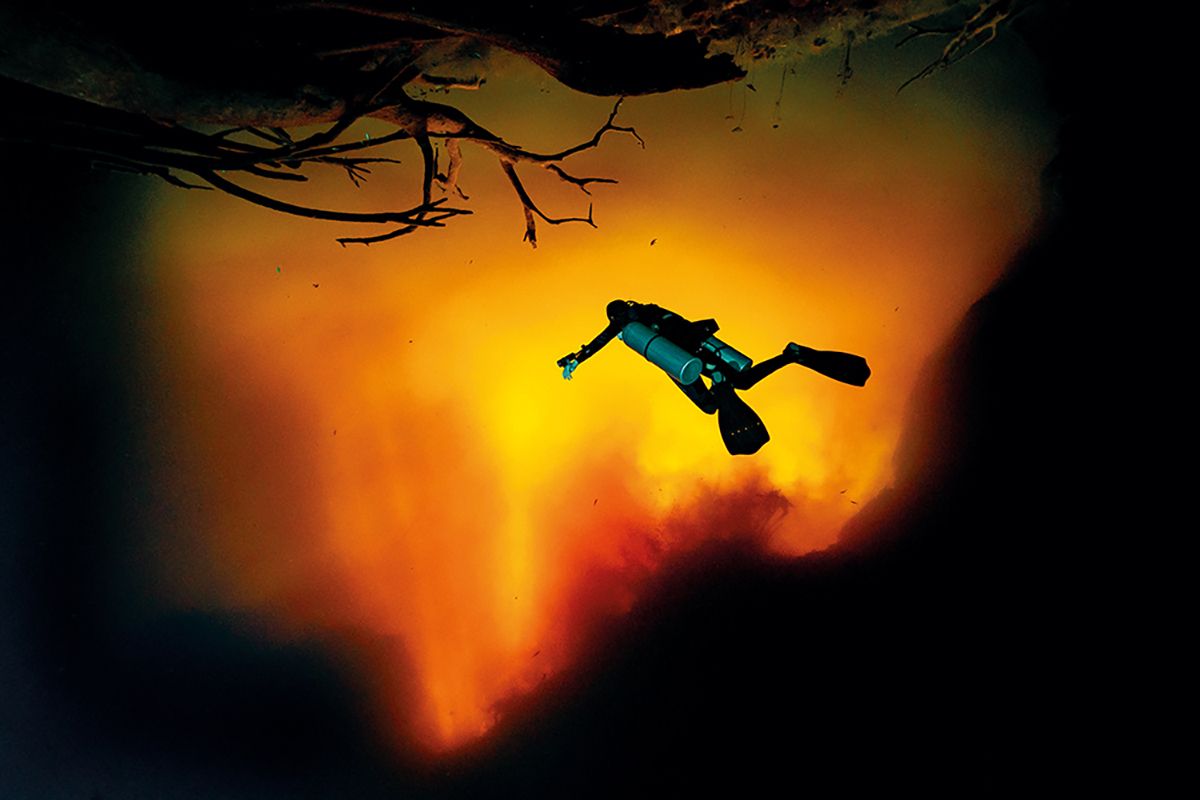

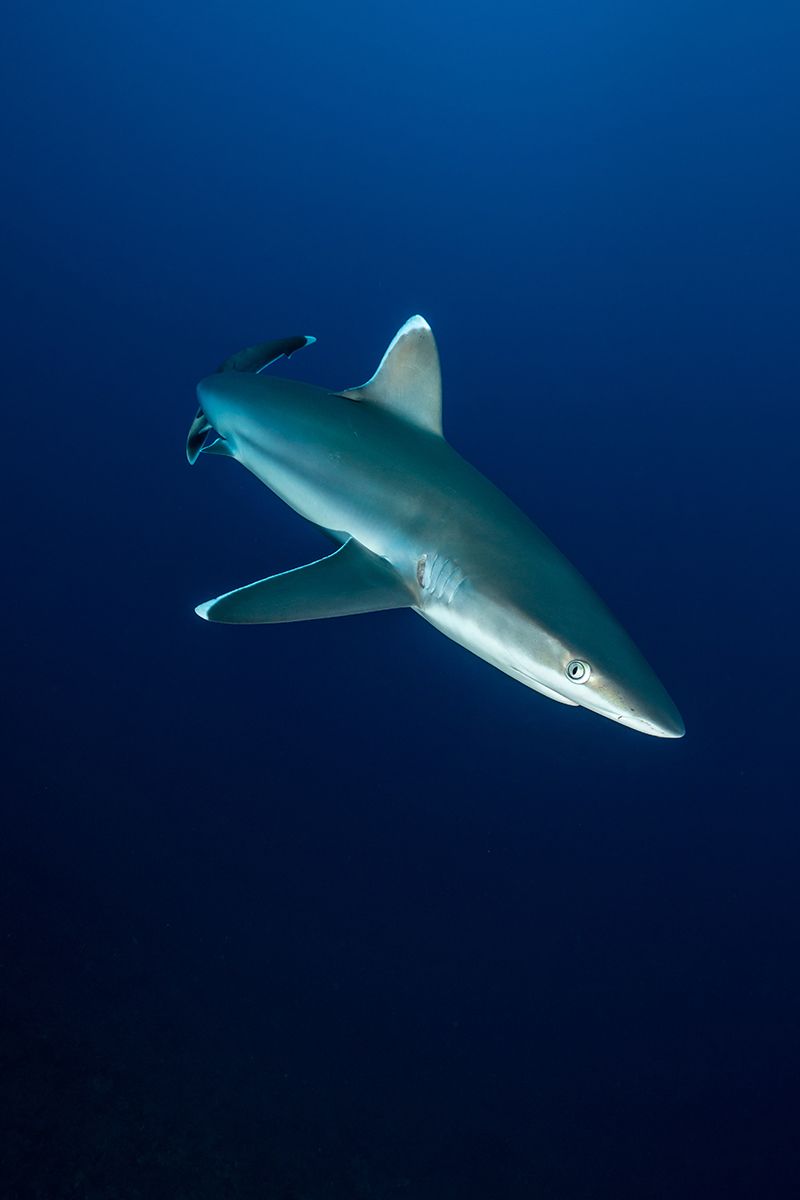
Photo: Valentina Cucchiara
It had been a dream of mine to be with Sea Shepherd since I was in school,’ said Valentina. ‘I did a lot of voluntary work, but [with Sea Shepherd] it’s always a daunting three or four months away – a long time, and I’ve always had to work. And so this year with the pandemic, I knew I was about to go to Revillagigedos for the first time, and I knew that one week would just, you know, tickle me, and I would just want more. So I talked to Nick and I said, “Look, I’m sorry, but I gotta go”, and I’m super-happy I did.’
Today, Valentina and Nick live in Playa Del Carmen, Mexico, running their company Liquid Jungle Media, creating a diverse array of content, from underwater productions, to aerial imaging and property portfolios. For many people, turning an activity about which one was initially very passionate, into a steady job often dulls the enthusiasm over time, but when we spoke over Zoom, there was no mistaking the passion that Valentina retains for her work in conservation and behind the lens, even after nearly three decades under the water.



‘I always say I have been so extremely lucky in my life to find a passion that, 26 years later, it’s still my drive, you know,’ she said. ‘It’s what makes me wake up every morning and be excited about what I do. And I still love it. I love it so much that it doesn’t matter sometimes whether I get paid or not. As long as I can continue doing what I love. I have jobs that pay the bills, and then there are jobs that pay much more than money.
‘I’m just very grateful that I’ve had the luck to find this great passion, and I’ve been able to continue with it until now. And I’m never gonna stop.’

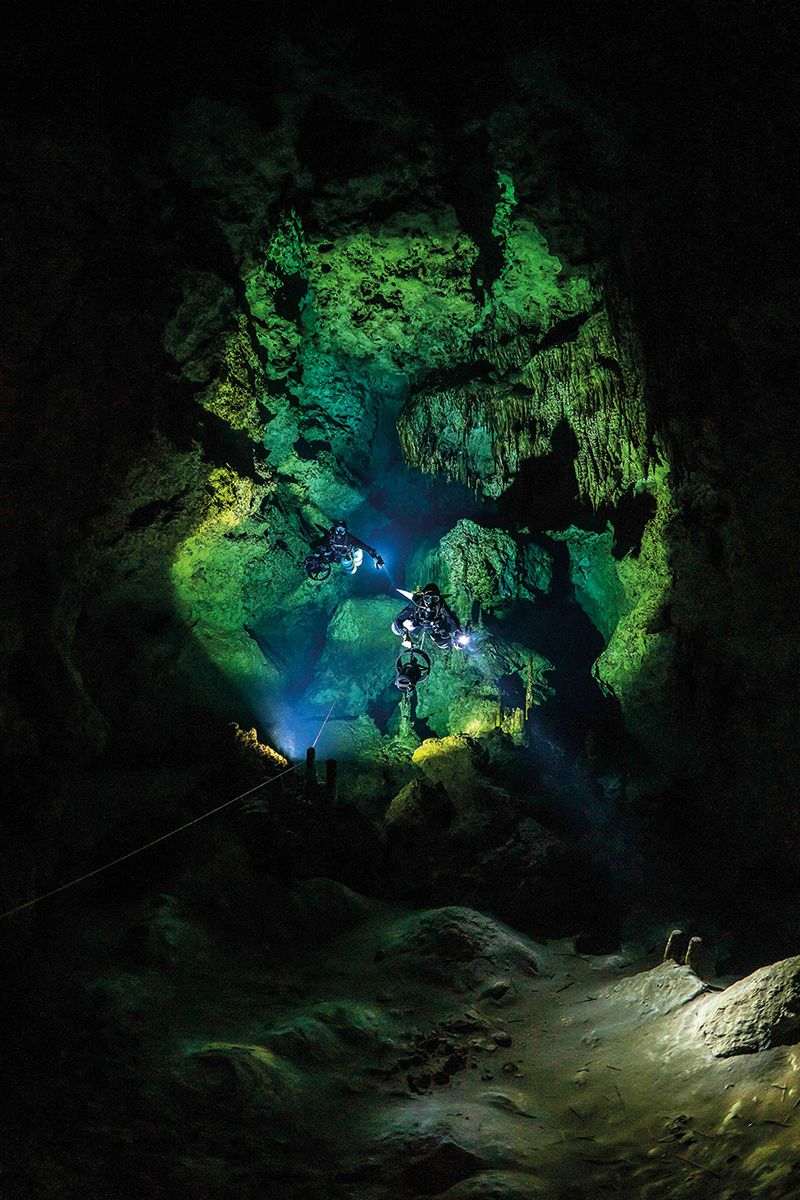
Valentina has also been a Featured Photographer for us, check out her portfolio here!



